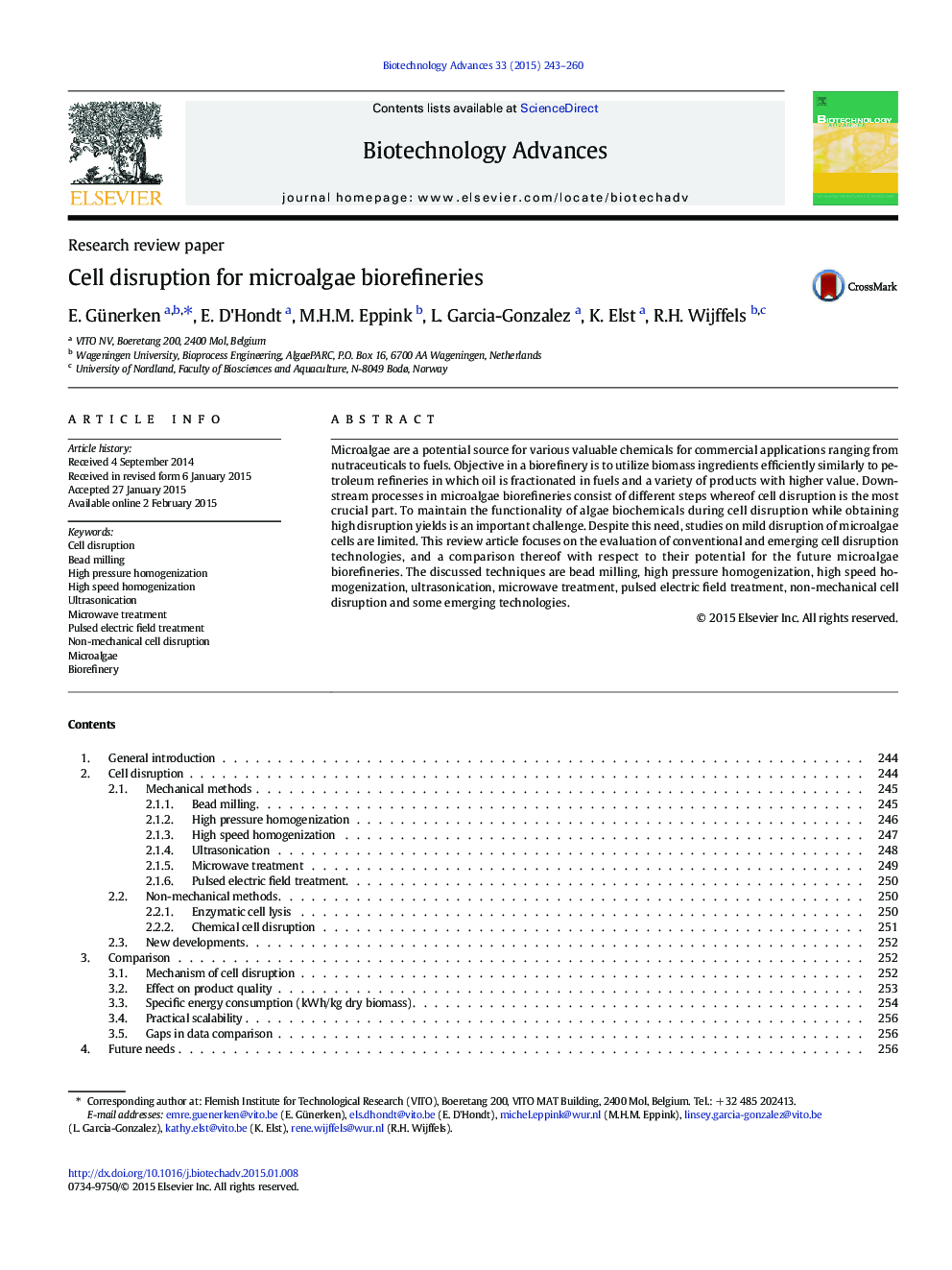| Article ID | Journal | Published Year | Pages | File Type |
|---|---|---|---|---|
| 14211 | Biotechnology Advances | 2015 | 18 Pages |
•This review gives an overview of current and emerging microalgae disruption methods.•The methods are compared in function of the mild microalgae biorefinery.•The main focus is product quality, selectivity, energy consumption and scalability.•High energy demand and non-comparable results require a more systematic approach.•Explosive decompression and heterogeneous chemical disruption are promising.
Microalgae are a potential source for various valuable chemicals for commercial applications ranging from nutraceuticals to fuels. Objective in a biorefinery is to utilize biomass ingredients efficiently similarly to petroleum refineries in which oil is fractionated in fuels and a variety of products with higher value. Downstream processes in microalgae biorefineries consist of different steps whereof cell disruption is the most crucial part. To maintain the functionality of algae biochemicals during cell disruption while obtaining high disruption yields is an important challenge. Despite this need, studies on mild disruption of microalgae cells are limited. This review article focuses on the evaluation of conventional and emerging cell disruption technologies, and a comparison thereof with respect to their potential for the future microalgae biorefineries. The discussed techniques are bead milling, high pressure homogenization, high speed homogenization, ultrasonication, microwave treatment, pulsed electric field treatment, non-mechanical cell disruption and some emerging technologies.
